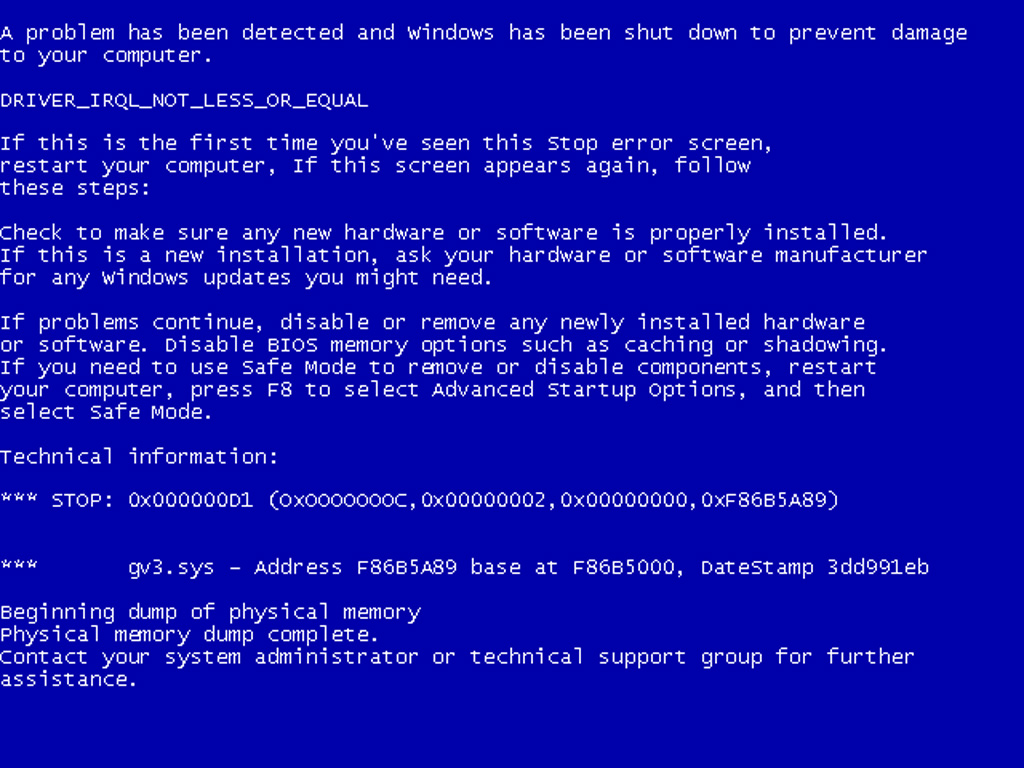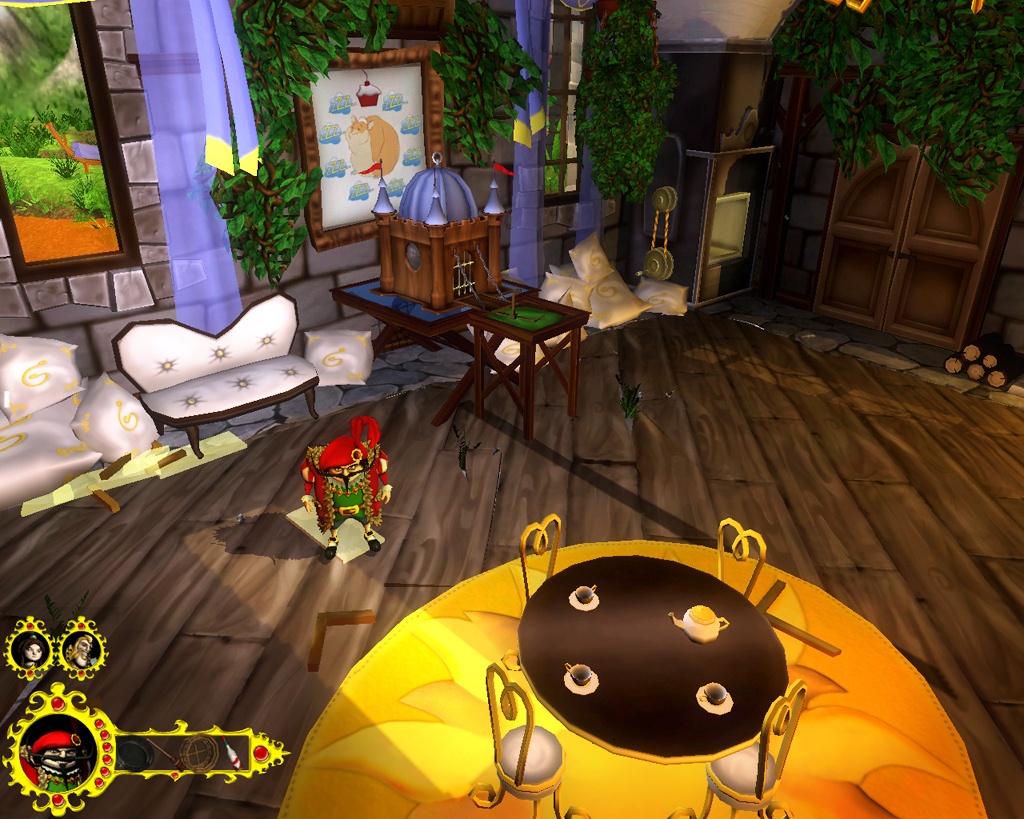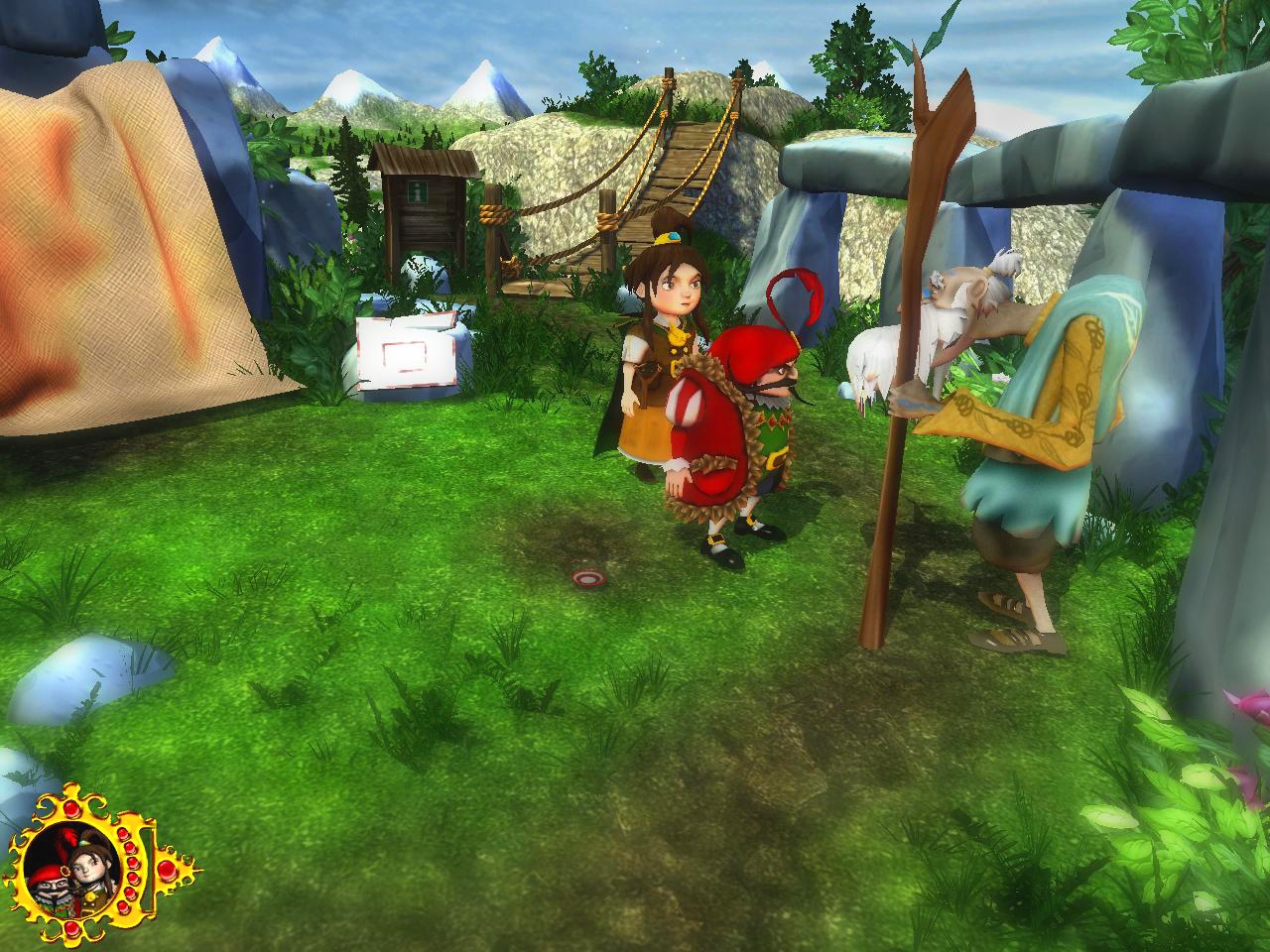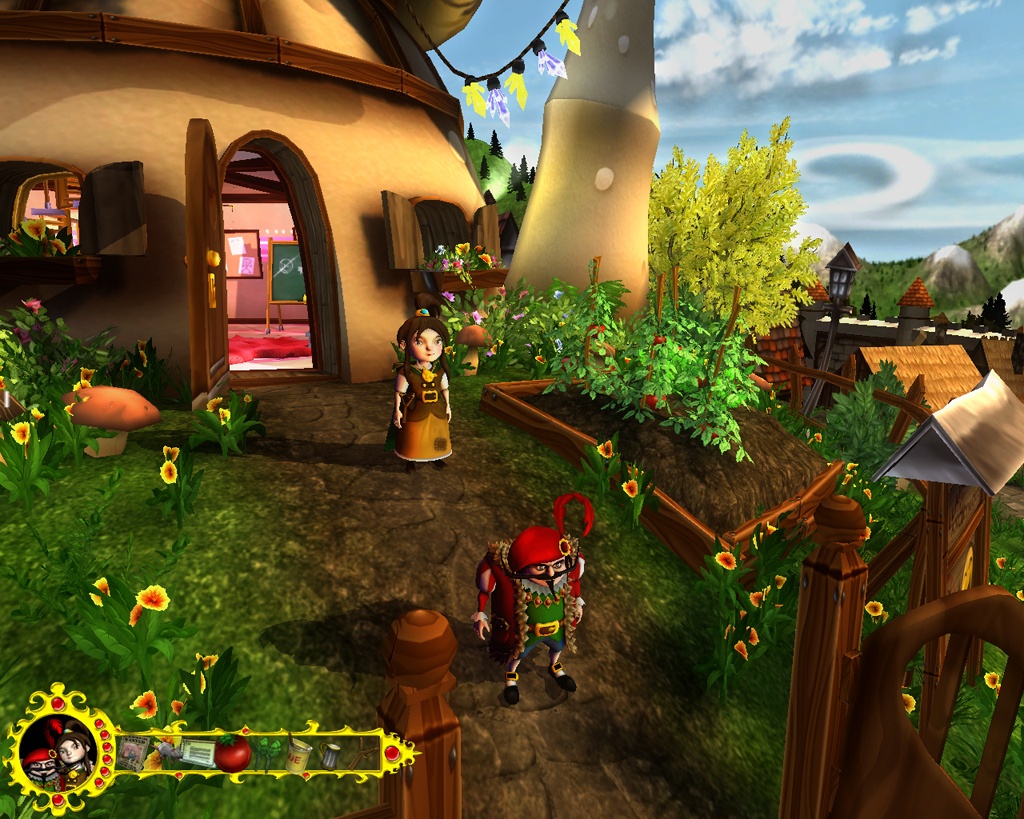To help re-create the frustrating experience that was playing the 2009 point-and-click adventure game Ceville, I’d like to–
Ugh. Not this again.
OK , I restarted my PC, and reloaded my article. Phew—it autosaved. Thank goodness.
Where was I? Right. To re-create Ceville, I’d like–
Agh! OK! Ceville! Trying again! My main problem with Ceville was–
MY MAIN PROBLEM WITH CEVILLE WAS THAT IT KEPT BREAKING MY GODDAMN COMPUTER!!
…
…
Nothing? OK. Phew. Now–
GAAAAAAAAAAAAAAAAAARN!!!
Like most of the games I’ve reviewed in the past year, Ceville is an item-combining, puzzle-solving point-and-click adventure comedy. You star as the eponymous Ceville, a recently expelled monarch who seriously wants to be Blackadder, as well as Lily, sweet Lily, the innocent little girl he’s kinda randomly and very creepily coaxed into keeping him company. Ceville’s ultimate goal is to reclaim his lost throne, and to that end, you, the player, are helping him. I’m not really sure why you’re doing that. The man is clearly evil—if his epic Bad Guy mustache didn’t give it away, the fact that he razes rain forests and tortures people for fun should clue you in.
No, I’m serious. He actually does those things. Not in the game, but he talks unapologetically about having done them in the past and wanting to do them again in the future. The man has zero redeeming qualities, and spoiler alert, he doesn’t learn, through the power of love, friendship, and/or sweet little girls, to become a better person by the end of his adventure. Like I said, it’s a comedy game, so you’re not supposed to take him seriously; but if you actually focus on what he’s saying, at all, it’s kinda disturbing that you’d want to help him get back in power, rather than, you know, try to “look at” a guillotine item in the game and then “use” it on him.
The jokes in this game are kinda miss-and-miss-and-miss-and-miss-and-miss-and-miss-and-finally-hit. When it’s funny, it’s funny; but you’ll be groaning much more than you’ll be launching your rofflecopters. The worst offenders, by far, are the game’s insistent pop-culture references. I do mean “insistent,” there; not incessant (though they are that, too). These pop-culture references reach their hands out of your monitor, grab you by the shirt collar and say “hey, I am a pop-culture reference! I’m inherently funny! LAUGH AT ME!” Most are shoehorned in and don’t make any sense in the context of the game, as is the case when, for example, Lily picks up a crowbar, and Ceville remarks, “Should I call you Mrs. Freeman?”
I don’t know if that’s a bad localization (the game was developed in Germany) or what, but it’s discombobulating because there’s no way Ceville has ever played Half-Life, and because it’s kind of an awkward thing to say to a 12-year-old girl, and because, really, who would ever say that and expect anyone to laugh? Granted, not all the references are that bad, but they’re almost all out of nowhere, and they bring the game to a stop while the player tries to figure out what the game’s referencing, why the game’s referencing that, and whether or not it’s worth a laugh. Usually, it isn’t.
The game really wants and tries to be funny, but I think it wants and tries a little too hard, like that kid everyone knew in middle school, whose jokes were always super-lame and super-obvious, and yet he’d insist on making jokes all the damn time, and it’d make everyone around him feel uncomfortable, and unsure whether they should give him a pity laugh or just try not to look at him. You know exactly who I’m talking about. Ceville is that kid. Either that, or maybe something was just lost when the game was translated from its native German. Or maybe both, and the game’s localization team was made up of awkward, generally unfunny, and probably smelly (because—let’s face it—that kid was always smelly) middle schoolers.
I mean, the humor isn’t all like that (as I said before, some of the jokes are total pants-pee’ers)—and I’m obsessed enough with adventure games that it didn’t make me wanna stop playing, but if you’re expecting this to hit the same hilarity heights as Telltale’s games, then you’re gonna be disappointed.
What did make me wanna stop playing, though, were the technical problems my girlfriend and I were constantly having while playing this game. Normally, I’d just assume that this is my computer’s fault, because I bought my computer over three years ago, so clearly it’s insane to think I could ever play a new game on it. Wikipedia tells me that this is a common issue with Ceville, though, so that means I’m not the only one who couldn’t run the game for long periods of time without receiving a–
Yeah. That thing. The BLUE SCREEN OF DEATH. We tried updating the game, turning the graphics settings all the way down, fussing with every option we could think of to make the game run more smoothly, and even switching off my second monitor; nevertheless, every time the game autosaved, we found ourselves holding our breath, because about every third time the game would give us a BLUE SCREEN OF DEATH.
Thankfully, the autosave always took, so we never had to redo anything in the game; but each play session still included at least 10-20 minutes’ worth of time wasted restarting my computer and reloading the game. (When I asked my girlfriend about it later, she told me that every time I asked if she wanted to play Ceville, her immediate first thought was “Uuuuuuuuuuuugh, we have to play this game again?! And reload it 500 times?!”) Unfortunately, there’s no way to turn the apparent cause of the BLUE SCREEN OF DEATH—the autosave itself—off, which, you know, might’ve been helpful.
So those are my biggest complaints—the humor is smelly-kid awkward, and the game doesn’t, you know, actually work a lot of the time. That said, Ceville manages to impress in another important area: the actual gameplay.
Ceville is the first adventure game I’ve played since 1993’s Day of the Tentacle with multiple main characters that you can switch between at will. Each character has their own inventory and their own distinct dialogue options, and oftentimes, each character is in a different location that’s inaccessible (at least initially) to the others. Many of the puzzles here involve determining who needs which items , and then figuring out how to get those items to them.
I would’ve liked it if this system were a little more streamlined. In DotT, you only have to flush an object down the Chron-o-John (a combination time machine/toilet) once; after that, any time you want to give an item to a different character, the game lets you skip that step, making the assumption that your character flushed the item off-camera. Here, you have to perform the action every time you want to trade items; it’s a fun puzzle at first, but it’s kind of a pain to have to do it so many times, especially when you’re only just guessing that the item you’re sending is the right one.
Wait, wasn’t I talking about the good parts of this game? Well, anyway, I think it’s cool that Ceville does the multiple-characters thing, because it’s pretty rare in this genre, and because it opens the game up to more puzzles to solve and more ways to solve them. Also, I like how well the two main characters in this game work together. For example, there are certain things you can’t do with Lily because she’s morally opposed to them, so you need to make the treacherous Ceville do them, instead. (Although, that said, the game missed an opportunity by not having Ceville refuse to do certain tasks because he’s evil, and evil people don’t, say, offer assistance to others).
In addition, Ceville offers several innovations that seriously imply that the game wants to be your best friend forever. For one, it introduces (so far as I know, anyway; it’s possible someone else has done it before) a feature that, like Telltale’s in-game hint system, should probably become a standard for all adventure games moving forward: If you hit the space bar, the game highlights all the items on the screen that you can interact with. It’s super cheatyface, but only if you allow it to be; if you limit your use of this feature to when you’re totally frustrated and can’t, for the goddamn life of you, figure out where the next item you need to grab is, it helps move things along. (Of course, the bad angel on my other shoulder would like to point out that maybe the only reason this feature is so helpful is because Ceville has almost as much retina-ouching pixel hunting as your typical hidden objects game.)
Another friendly aspect of Ceville is its color-coded on-screen text. If you click on an item in your inventory, and then hover your cursor over something in the environment that you’d like to use that item with, the color of the text describing the item in the environment tells you whether the interaction you’re considering will actually do anything. If the text is orange, congratulations!: You get to do something. If the text isn’t orange, though, no dice, and if you try the interaction anyway, Ceville will make fun of you. As with the cheatyface button, this helps you to plow through the game, without the frustrating experience of trying everything on everything to see if anything at all ever happens.
What’s more, the game extends a helpful hand to you in its (fairly infrequent) timed puzzles. In these puzzles, you have X seconds to accomplish Y task, but frequently, each time you fail the task, the game adds more seconds to X to give you more time to figure out what the heck you’re supposed to be doing. Which is kind of nice, if you spend all of the first few X’s totally unsure of what the puzzle even is, let alone how to solve it.
And that’s still not all! (Boy, it’s starting to get creepy how much this game wants to be friends with you.) The game lets you click to skip through dialogue and double-click to quick-travel to a place on the screen. It also doesn’t encumber you with actions like “pick up” or “talk” or “open”; rather, it features the trendy one-click interactions favored by today’s adventure games, where you click on something, and the game interacts with it in the one way it’s programmed to. I’m not really sure how I feel about this—I don’t know if I like how much it simplifies things (compared to, for example, the old-school SCUMM engine), or if I think it makes things too easy, or if I think it overly limits the number of fun interactions you can have with things.
Ceville also offers some surprisingly solid voice acting for such a low-budget game, with the exception of a few places where a character’s inflection was off, as though the actors recorded their dialogue completely independent of one another and without any reference to one another’s recordings—which they probably did. The guy who plays Ceville himself is, in particular, very convincing as a vaguely British person who’s sole character trait is that he’s evil. There’s also some funny chatter that occurs between NPCs in the background, though this sometimes comes at the expense of your concentration—it’s hard to figure out how to get the stupid CEOs to look out their stupid window when they won’t stop talking about how much they like coffee. There’s lots and lots of things to click on in Ceville, which is something I always appreciate in an adventure game; and, amazingly enough, the game has funny graphics at times, with characters sporting hilariously (dis)proportioned body parts, and fat dudes with tramp stamps. In fact, the graphics are probably a lot funnier than the text and dialogue in this game.
However, Ceville also has one of the most confusing and deflating endings of all time, and the game in general just isn’t that polished, considering the technical issues mentioned above, plus other random glitches we came across, such as missing/transposed voice acting. It also has super long loading times between areas; I’m talking like thirty seconds to a minute. The wait is alleviated a little by some of the loading screens having funny text; but unfortunately, there aren’t nearly enough different loading screens to make up for it, considering how frequently you need to change locations.
My girlfriend and I finished Ceville in about 11 hours, which seemed long compared to the Tales of Monkey Island games we’ve been playing…but each of those was only one chapter of a full-length game, whereas Ceville is a full-length game in itself. (It also seemed longer because approximately a third of each of our play sessions consisted of restarting my computer.) So it’s actually a little on the short side, I think; but, then again, it’s only $10.
If you’re not already a big-time fan of adventure games, there’s no reason at all for you to play this game; however, if you’re blindingly obsessive like me, then despite the weird humor and the technical flaws, you’ll have enough fun to justify purchasing Ceville. Just make sure your computer is reasonably up-to–






Well done, Franz. I suppose there are certain games that require loads of your patience in terms of getting it to run properly.